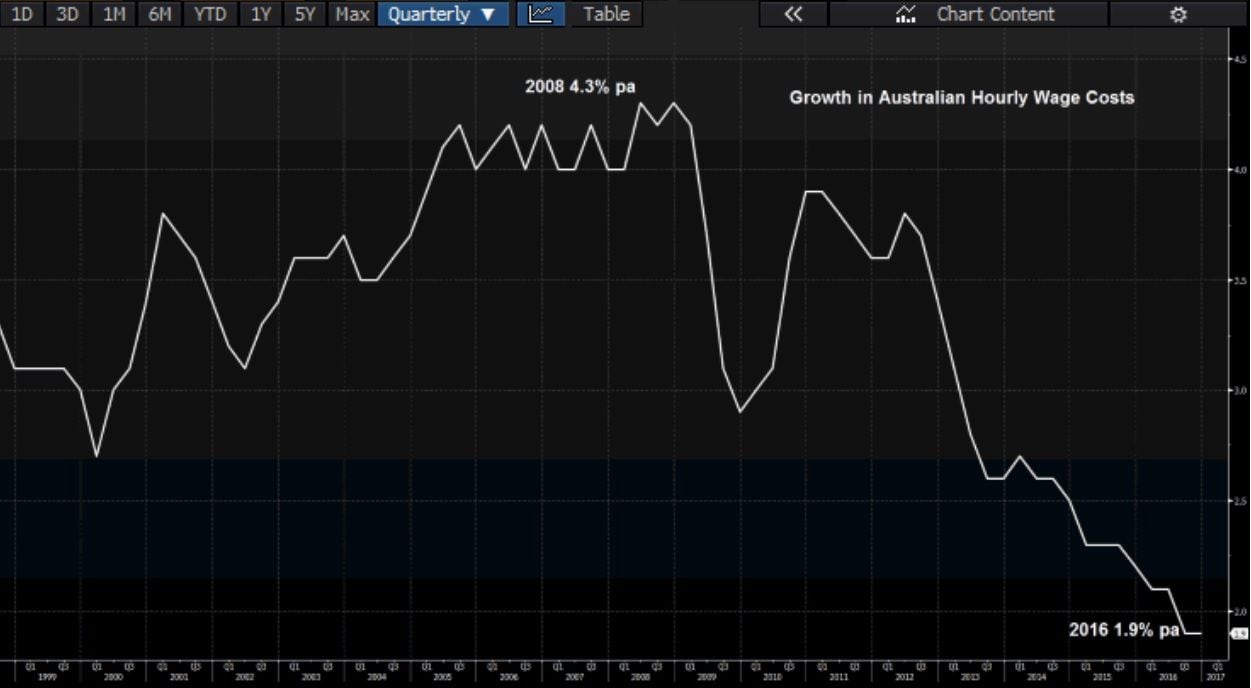Two economic data releases this morning have come in close to market expectations but provide an important window into the Australian economy.
The Wage Price index improved marginally to be up 0.5% in the December quarter, leaving the annual rate unchanged at a low 1.9%. The annual increase in private sector wages actually fell to a record low of 1.8%
The Bureau of Statistics also reports that the average wait for a wage increase has blown out to 21 months. Four years ago it was 12 months
Low wage growth reflects the skew towards part time employment in new jobs being created in the economy. At these levels, overall wage growth is barely keeping pace with inflation and cost of living increases. Underlying inflation grew around 1.6% in the year to December.
With wage earners battling to keep ahead of cost increases, real (above inflation) consumer spending is likely to be subdued. That’s important because consumption makes up about 55% of GDP.
The other figure released this morning was construction work done. It missed expectations, declining 0.2% in the December quarter compared to an expected gain of 0.3%. However this miss was not big enough to move the market. Engineering work and the run off in big mining projects remains a negative, falling 2.2% in the quarter. Modest gains in building work were not enough to compensate.
Being close to expectations, these releases have not had much immediate impact on the Aussie Dollar. However low wage growth is likely to keep the RBA in neutral mode for some time to come. The Governor has suggested in recent speeches that the risk of creating excessive debt problems is making the RBA reluctant to cut rates. At the same time the next rate hike looks a fair way off given the outlook for wage growth.



